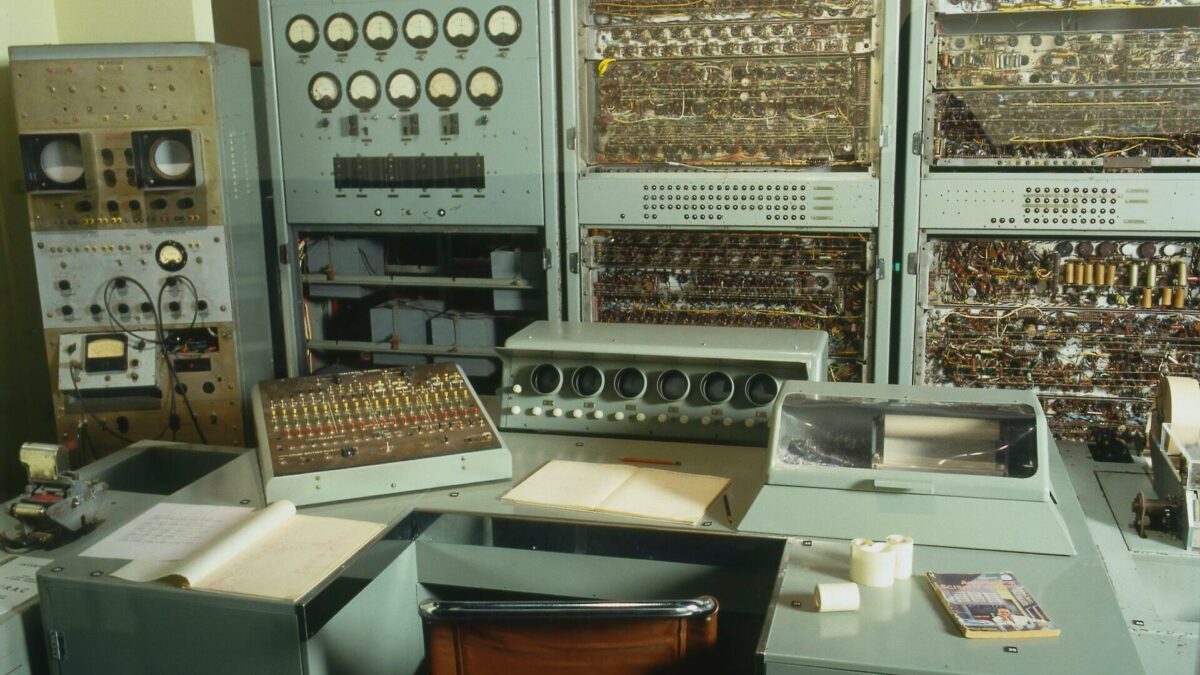Where are the women in IT?

By Fay Capstick
As we saw last week, the first woman computer programmer was Ada Lovelace, daughter of Lord Byron. From a strong female start with the new technology of computers, women started to drop back and now only represent 8% of the profession (https://www.blueoptima.com/blog/why-are-there-so-few-female-software-developers).
This week we will look at the history of women in IT, before next week going on to look at what can be done to redress the modern imbalance and encourage more women into STEM careers.
As we saw, Ada Lovelace invented the first computer algorithm which was designed for use by Charles Babbage’s Analytical Engine. She was also a visionary who saw that the potential of the machine could go far beyond the task of performing calculations, and envisioned something that could also create art and music.
After the US Civil War ended many widows supported themselves by performing calculations, making them human computers. A shortage of men meant that many were also in government computing role
In the 19th century and the early 20th century programming was seen as primarily a job for women. This continued until the end of World War II.
Harvard Computers
At Harvard University women were employed to be human computers, the Harvard Computers. They worked in the observatory to perform complex calculations. By 1880 several women were doing this job. Anne Winlock is one of the best known (https://en.wikipedia.org/wiki/Anna_Winlock). The team of women at Harvard catalogued over 10,000 stars and developed the stellar classification scheme.
Sadly one of the main reasons that women were hired at Harvard was because it was known that women would work for less pay than men, a problem that society still has.
World War II
Women worked on actual computers during World War II, as well as continuing to perform complex human computer calculations. It was seen as a job that was beneath men, so women were put to this work. Even more unfortunately, black women who did this work were worked doubly hard and in segregated conditions.
In the UK, at Bletchley Park, the Bombe was the machine that the British had to try and decode the Enigma machine messages that the Germans sent. The initial design for the Bombe was produced by Alan Turing. Women worked at Bletchley Park as cryptographers, including Joyce Aylard and Joan Clarke. At this time the Civil Service didn’t even have a job listing for a Senior Female Cryptanalyst expecting it to be done by a male. However 75% of those working at Bletchley Park during WWII were women (https://www.womenintech.co.uk/the-history-of-women-in-tech).
Grace Hopper and COBOL
In 1952 Grace Hopper (b.1906), an American, produced what was essentially the first code compiler. Further, she developed the programming language that would go on to become COBOL, which is still used today. She was a mathematics professor and was in the US Navy. In retirement she was a senior consultant to DEC* (Digital Equipment Corporation). She lectured widely on the early days of computing, doing this as a goodwill ambassador for DEC until her death age 85 in 1992 (https://en.wikipedia.org/wiki/Grace_Hopper). We can also thank Hopper for the terms ‘bug’ and ‘debugging’.
NASA
In 1935 the National Advisory Committee for Astronautics (NACA) hired a group of women to work as a computer pool. The NACA went on to become NASA.
By the 1950s there was a team of women performing calculations. NASA also segregated their black and white staff, going as far as to have them working in separate buildings. Further, black women were also often overlooked for promotion.
Male Dominated
The IT industry continued to be a female dominated profession until the late 1960s. Until then programming was seen as a task more suited to women. By then women accounted for around 50% of programmers, however they still weren’t being promoted or paid equally.
The change to a male dominated profession has been studied but no firm explanation exists to explain the shift.
In terms of formal computing education, the peak was in 1984 when 37% of computer science graduates were female before going into decline and then stagnating. The current figure for the UK is 13% (https://www.stemwomen.com/solving-the-gender-gap-in-computer-science-and-gaming). It should be noted that this imbalance isn’t global. In Saudi Arabia, for example, in 2014, women represented 59% of computer science students.
Conclusion
It is disappointing that women have become a smaller presence in the IT industry, but we have found that the tide is slowly starting to turn and more women are entering the industry. Next week we will look at what more can be done to encourage this.
Final thoughts
At Parker Shaw we have been at the forefront of the sector we serve, IT & Digital Recruitment and Consulting, for over 30 years. We can advise you on all your hiring needs. If you are looking for your next job in the IT sector please check our Jobs Board for our current live vacancies at https://parkershaw.co.uk/jobs-board.
Notes
* DEC was acquired by Compaq in June 1998, and then merged with Hewlett-Packard (HP) in 2002. At Parker Shaw we have been proud to be a supplier to DEC, Compaq and HP, and we celebrate our ongoing and thriving relationship.
